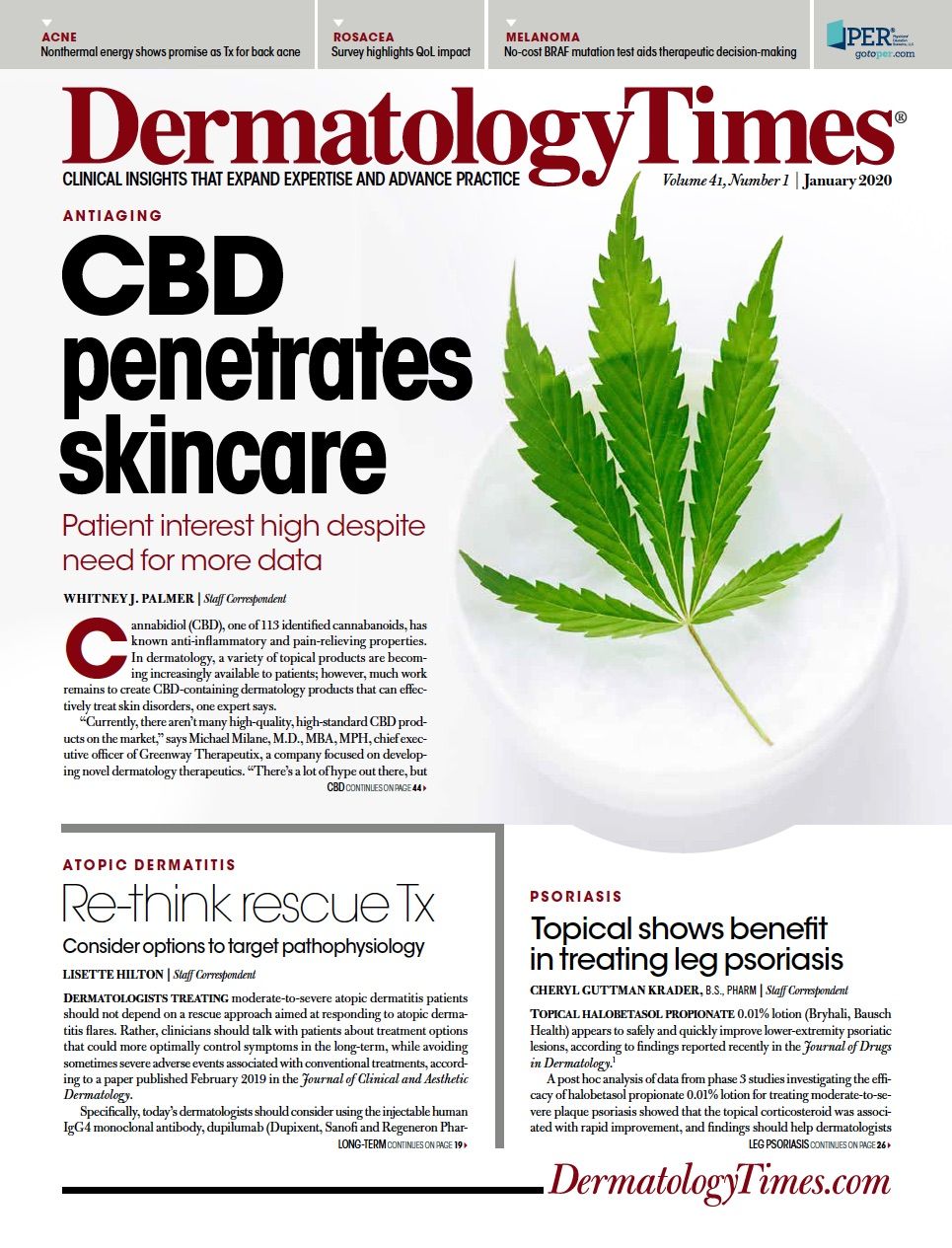- Case-Based Roundtable
- General Dermatology
- Eczema
- Chronic Hand Eczema
- Alopecia
- Aesthetics
- Vitiligo
- COVID-19
- Actinic Keratosis
- Precision Medicine and Biologics
- Rare Disease
- Wound Care
- Rosacea
- Psoriasis
- Psoriatic Arthritis
- Atopic Dermatitis
- Melasma
- NP and PA
- Skin Cancer
- Hidradenitis Suppurativa
- Drug Watch
- Pigmentary Disorders
- Acne
- Pediatric Dermatology
- Practice Management
- Prurigo Nodularis
- Buy-and-Bill
Publication
Article
Dermatology Times
Adult, teen acne differ
Author(s):
Adult female acne should be treated differently than teenage acne. There is a hormonal component at play rather than a bacterial pathogenesis that should be considered, one expert says.
Adult acne in women is not related to a specific Cutibacterium acnes (C. acnes) subtype, according to a small study, published recently. Results support the notion that adult female acne should be treated very differently than classic teenage male acne, one expert says.
Researchers collected skin samples of inflammatory lesions of female acne patients from 2014 to 2017. They compared C. acnes characteristics, including phylotype, clonal complex, single-locus sequence typing scheme and resistance profile, in 51 samples from adult women to 31 samples from teenagers. According to the results, published September 2019 in the Journal of the American Academy of Dermatology (JAAD), the authors found that when compared with acne in teens, adult women had no higher frequency of phylotype, clonal complex or single-locus sequence typing scheme.1
Results were similar when researchers restricted the comparison to female teenagers versus adult women, as well as when they compared teenagers to women older than age 25, which is how adult acne is defined in the literature.
C. acnes phylotype IA1 was the predominant acne-associated phylotype among adult women and adolescents, and the frequency of C. acnes resistance was similar among the two groups.
This is the first paper to report no link between adult female acne and a specific C. acnes subtype, according to the authors.
This study reiterates that there is a hormonal component at play rather than a bacterial pathogenesis that dermatologists should consider when treating female adult acne patients, according to Emmy M. Graber, M.D., founder and director of the Dermatology Institute of Boston and clinical affiliate instructor of dermatology at Northeastern University in Boston. Dr. Graber, who directs the Spironolactone Forum at the American Academy of Dermatology (AAD) each year, is not an author on the JAAD study.
“Adult women oftentimes have a hormonal type of acne that looks so different on the skin than the classic teenage acne. It often has a different pattern on the face. Patients have a different history as to how it flares. Yet it’s seen as caused by bacteria,” Dr. Graber says.
“In clinical practice we see that adult acne in women does not respond to antibiotics as well as the traditional teenage acne, so there are two questions: Is it because it’s a different type of bacteria, or is it because of other factors? I think from the study now we can say for sure that it’s not because it’s a different bacterium,” she says.
Dermatologists should start by asking adult female acne patients key questions during the history taking.
“The history is very important, especially for adult hormonal acne in women because it can flare cyclically and around menstruation,” she says.
Dr. Graber asks female acne patients: Is what I’m seeing today how it typically looks? Is this a good day for your skin? Is this a bad day?
“A lot of time the adult hormonal acne patients will say, it looks different depending on the time of the month,” she says.
Dr. Graber adds, she generally does not target bacteria when she treats adult hormonal acne. Rather she targets hormonal acne triggers and often uses spironolactone in her adult female patients. Spironolactone isn’t an antibiotic and it doesn’t directly impact bacteria. She recommends dermatologists consider spironolactone or birth control pills as first-line treatments, rather than an oral antibacterial agent, for adult hormonal acne.
There is research suggesting spironolactone is efficacious for female acne. Researchers using the comprehensive acne severity scale to analyze spironolactone treatment in 110 women, mean age 27 years, with acne found the majority of women experienced dramatic improvement in acne on their face, chest and back with spironolactone treatment, according to a study published in 2017 in the International Journal of Women’s Dermatology.2
When managing these patients, Dr. Graber says it’s important to set realistic expectations about the potential need for long-term treatment.
“I tell patients with adult hormonal acne that we don’t really know when it’s going to end. We don’t have a cure for it, but at some point it seems that it does burn out in adult women,” she says. “We just don’t know when that will be.”
There is a topical spironolactone agent in the pipeline that appears to behave similarly to oral spironolactone. In August, Cassiopea SpA announced that it submitted a New Drug Application to the FDA for marketing approval of clascoterone cream 1%, a topical androgen receptor inhibitor, for acne treatment. Clascoterone 1% cream is in late stage development for acne treatment.
“That’s something to watch for in the future,” she says. Â
References:
References
1. Saint-jean M, Corvec S, Nguyen JM, et al. Adult acne in women is not associated with a specific type of Cutibacterium acnes. J Am Acad Dermatol. 2019;81(3):851-852.
2. Charny JW, Choi JK, James WD. Spironolactone for the treatment of acne in women, a retrospective study of 110 patients. Int J Womens Dermatol. 2017;3(2):111-115.






